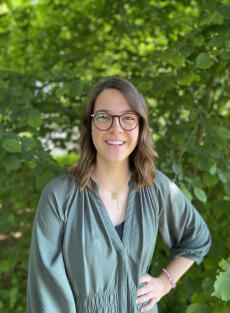Education
- Since 2022:
PhD studies in the Molecular Evolution and Sociobiology Group, Institute for Evolution and Biodiversity, University of Münster, Germany
- 2015 - 2022:
Bachelor of Science (B.Sc.) and Master of Science (M.Sc.) in Biosciences, University of Münster, Germany
Work experience
- 2019 - 2020:
Employee at the City Hall Greven, Germany
- 2015:
Internship, Institute of Immunology, University of Münster, Germany
Supervisors
- Prof. Dr. Jürgen Gadau, Molecular Evolution and Sociobiology Group, Institute for Evolution and Biodiversity, University of Münster, Germany
- Dr. Lukas Schrader, Molecular Evolution and Sociobiology Group, Institute for Evolution and Biodiversity, University of Münster, Germany
- Dr. Eva Schultner, University of Regensburg, Germany
Research interests
- Rapid evolution and TE-induced genetic variation in invasive ants.
- Phenotypic canalization and the heat-shock protein 90 as environmental and genetic buffers in invasive ants.
PhD project description
Transposable elements as genetic innovators in the invasive ant Cardiocondyla obscurior
The question behind how evolution works has attracted biologists’ attention for over a century revealing profound insights into genetic, molecular, and ecological mechanisms of evolution. In contrast to the previously presumed evolutionary progress through steadily emerging,
random genetic mutations that induce gradual phenotypic changes, advances in genomics have revealed that other, more dynamic, and diverse mechanisms can underlie evolutionary change. Here, we plan on examining the genome evolutionary impact of Transposable Elements (selfish, jumping genes; TEs) and their creative role as a force in adaptive evolution.
Using the invasive ant species Cardiocondyla obscurior as our model organism, we aim to study TEs as drivers of adaptability, “superorganismal somatic mosaicism”, and TE-driven genome dynamics. Therefore, we plan to:
- Asses the link between environmental stress, TE activation, TE-islands (clusters of TEs in the genome), and adaptability in C. obscurior.
- Establish whether the heat-shock protein (HSP)-dependent cellular stress response is central for mediating between environmental conditions and adaptability.
- Explore whether a mechanism analogous to somatic mosaicism can cause adaptive genetic diversification of the worker caste.
Experimentally, we plan on conducting germline expression profiling, assessing de novo transpositions, and studying phenotypic diversity in C. obscurior under control and stress conditions and under pharmacological inhibition of the most abundant HSP, Hsp90. Finally, using agent-based modelling we plan to explore the long-term adaptive potential of TEs in this species.
Publications
- van den Bos, E.; Gadau, J.; Schrader, L. 2024. ‘Molecular identification of polymorphic transposable elements in populations of the invasive ant Cardiocondyla obscurior.’ Biology Methods and Protocols bpae050. doi: 10.1093/biomethods/bpae050.
- van den Bos E, Walbaum S, Horsthemke M, Bachg AC, Hanley PJ (2020) Time-lapse imaging of mouse macrophage chemotaxis. Journal of Visualized Experiments 158:10.3791/60750. 10.3791/60750 [doi]
- van den Bos E, Ambrosy B, Horsthemke M, Walbaum S, Bach AC, Wettschureck N, Innamorati G, Wilkie TM, Hanley PJ (2020) Knockout mouse models reveal the contributions of G protein subunits to complement C5a receptor-mediated chemotaxis. Journal of Biological Chemistry 295(22):7726-7742. 10.1074/jbc.RA119.011984 [doi]

